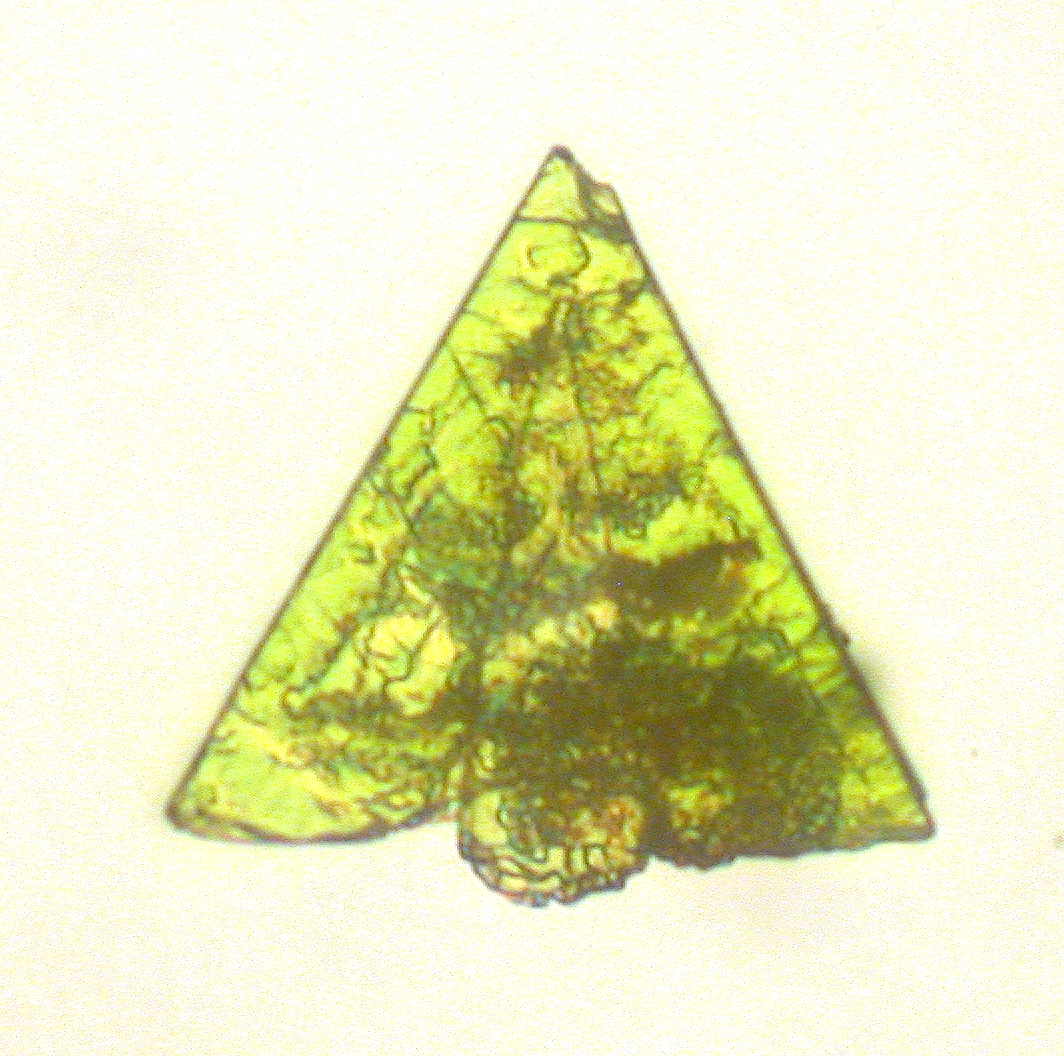
Bairdite crystal (100) surface
Bairdite,
Pb2Cu2+4Te6+2O10(OH)2(SO4)ĚH2O,
is a new tellurate from Otto Mountain near Baker, California, U.S.A. It
occurs
in vugs in quartz associated with khinite, cerussite, goethite, and
hematite. It
is interpreted as having formed from the partial oxidation of primary
sulfides
and tellurides during or following brecciation of quartz veins.
Bairdite is monoclinic,
space group P21/c, with unit cell dimensions a = 14.3126(10),
b =
5.2267(3), c = 9.4878(5) ┼, β =
106.815(7)░, V = 679.41(7) ┼3,
and Z = 2.
Bairdite occurs as diamond-shaped
tabular crystals up to about 250 Ám long and 5 Ám thick, in subparallel
and
fan-shaped aggregates. The color is lime green, the streak is pale lime
green,
and the luster is adamantine. The Mohs hardness is estimated at between
2 and
3. Bairdite is brittle with an irregular fracture and one perfect
cleavage on {100}.
The calculated density based on the empirical formula is 6.062 g/cm3.
Bairdite is
biaxial (+), with calculated indices
of refraction of α = 1.953, β = 1.966, and γ = 2.039. The measured 2V is 47(2)░, dispersion is r
< v, strong and the optical
orientation is Y = b;
Z ^ a
= 34░ in obtuse angle β. The pleochroism is strong: Z
(pale green) <<< X
(green) < Y (green).
Electron
microprobe analyses (average of 4) provided: PbO 34.22, CaO 0.06, CuO
23.80, TeO3
26.34, SO3 5.74, H2O 2.81
(structure), total 92.97 wt%. The
empirical formula
(based on 17 O atoms pfu) is: Pb2.05Ca0.01Cu2+3.99Te6+2.00S0.96O17.00H4.16.
The eight strongest powder X-ray diffraction lines are [dobs
in ┼ (hkl) I]:
4.77 (110,-102) 50, 4.522 (002,011,-111) 66, 3.48 (multiple) 62,
2.999 (311, -411) 97, 2.701 (-502,-113,-213) 79, 2.614 (013,020) 100,
1.727 (multiple)
65, and 1.509 (-911,033,324) 83. The
crystal structure
of bairdite (R1
= 0.072
for 1406 reflections with Fo
> 4sF)
contains
edge-sharing chains Te6+O6
and Cu2+O6 octahedra
parallel to b that are joined by
corner-sharing in the a direction,
forming thick stair-step-like hexagonal close packed layers
parallel to {100}. The polyhedral sheet has similarities to those in
the
structures of timroseite and paratimroseite. The thick interlayer
region
contains 10-coordinated Pb and SO4. Raman and infrared spectral data are presented.
